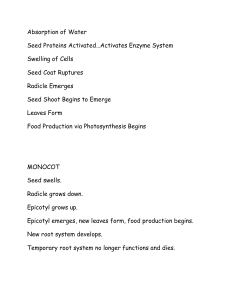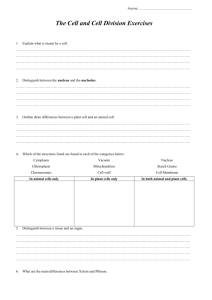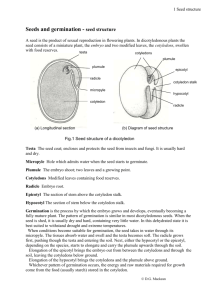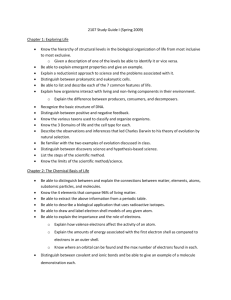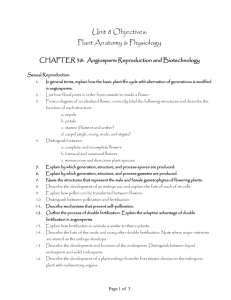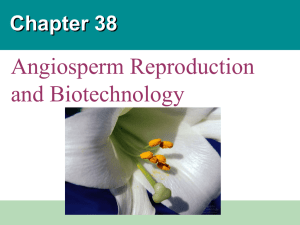AP Biology Chapter 34 Assignment
advertisement
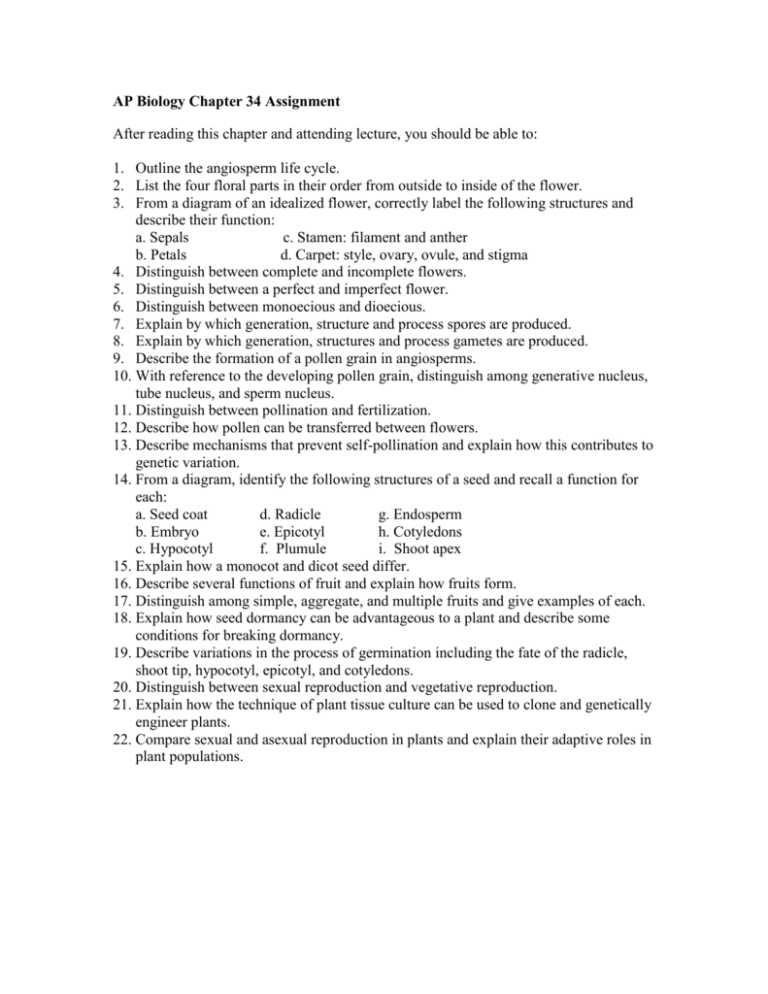
AP Biology Chapter 34 Assignment After reading this chapter and attending lecture, you should be able to: 1. Outline the angiosperm life cycle. 2. List the four floral parts in their order from outside to inside of the flower. 3. From a diagram of an idealized flower, correctly label the following structures and describe their function: a. Sepals c. Stamen: filament and anther b. Petals d. Carpet: style, ovary, ovule, and stigma 4. Distinguish between complete and incomplete flowers. 5. Distinguish between a perfect and imperfect flower. 6. Distinguish between monoecious and dioecious. 7. Explain by which generation, structure and process spores are produced. 8. Explain by which generation, structures and process gametes are produced. 9. Describe the formation of a pollen grain in angiosperms. 10. With reference to the developing pollen grain, distinguish among generative nucleus, tube nucleus, and sperm nucleus. 11. Distinguish between pollination and fertilization. 12. Describe how pollen can be transferred between flowers. 13. Describe mechanisms that prevent self-pollination and explain how this contributes to genetic variation. 14. From a diagram, identify the following structures of a seed and recall a function for each: a. Seed coat d. Radicle g. Endosperm b. Embryo e. Epicotyl h. Cotyledons c. Hypocotyl f. Plumule i. Shoot apex 15. Explain how a monocot and dicot seed differ. 16. Describe several functions of fruit and explain how fruits form. 17. Distinguish among simple, aggregate, and multiple fruits and give examples of each. 18. Explain how seed dormancy can be advantageous to a plant and describe some conditions for breaking dormancy. 19. Describe variations in the process of germination including the fate of the radicle, shoot tip, hypocotyl, epicotyl, and cotyledons. 20. Distinguish between sexual reproduction and vegetative reproduction. 21. Explain how the technique of plant tissue culture can be used to clone and genetically engineer plants. 22. Compare sexual and asexual reproduction in plants and explain their adaptive roles in plant populations.
